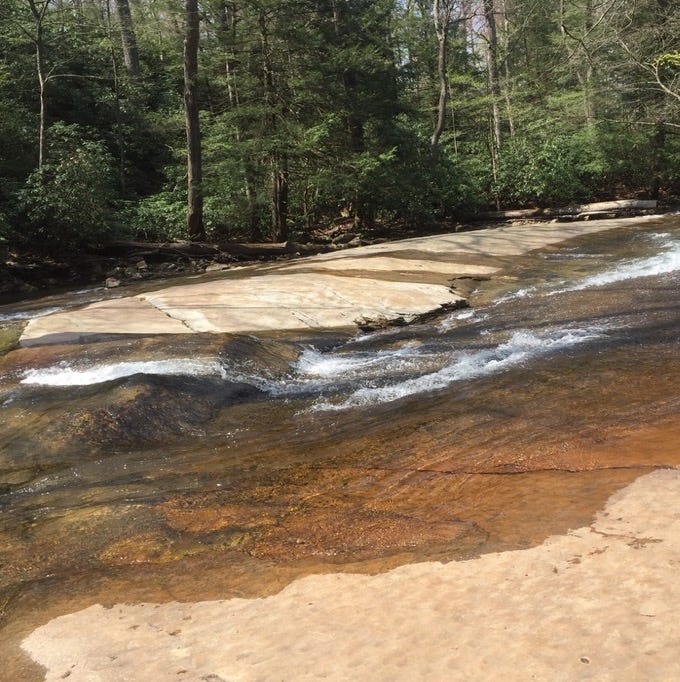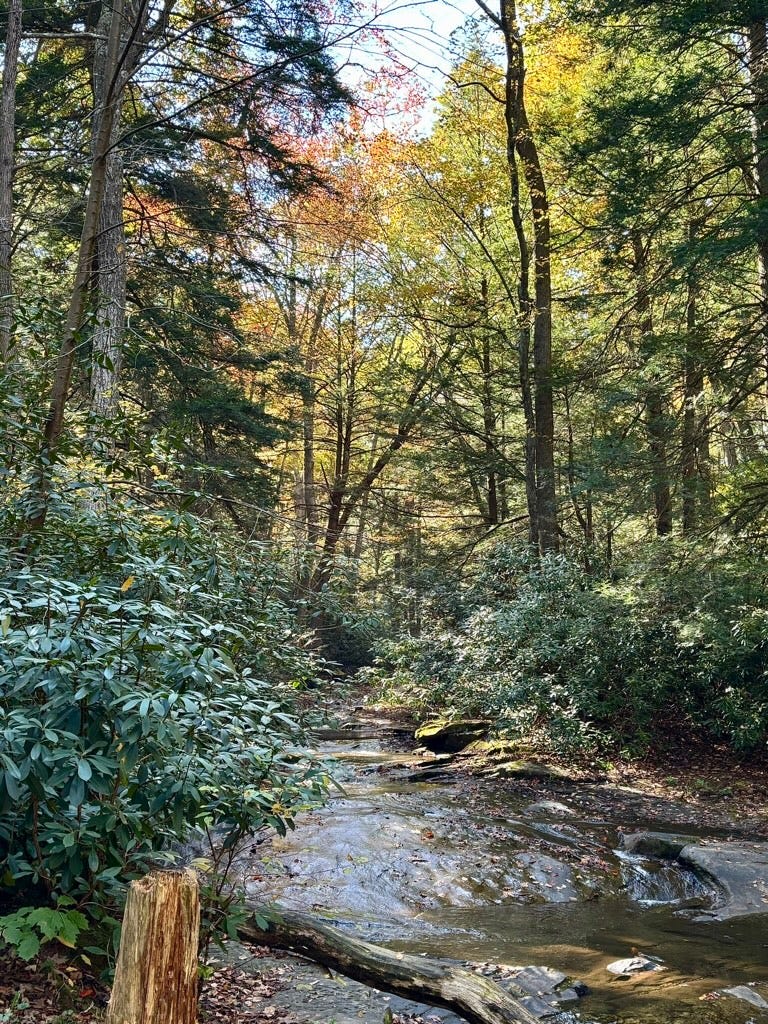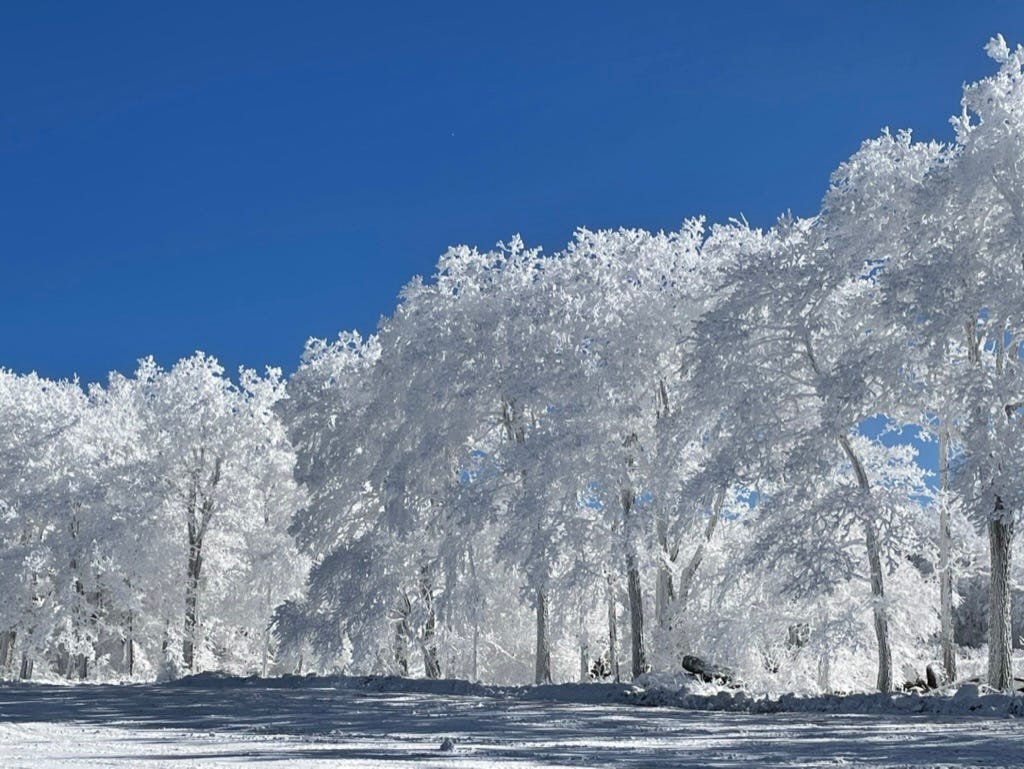When my boys were still quite young, a friend of the family suggested that we house-sit for him. Fred lived in a small cottage along a stream that ran into Linn Run State Park, an idyllic spot in Western Pennsylvania softened by mountain laurel and hemlocks. We readily agreed to spend a month. Visions of stream hiking, wandering through woods, and campfires danced in our heads.
But I knew I had to impress on my boys that Fred was a bachelor whose house must be treated like a shrine. Activities would be outdoors, and the usual wrestling inside was forbidden. Our two dogs would also have to live a feral life.
I may have overdone the warnings. On our first night at the cottage, we decided to follow Fred’s advice for dinner. Down the trail from the cottage was a stone house long deserted, no walls completely intact and no roof to obstruct the stars. But it did have a functional two-story chimney where we could build a fire and roast hot dogs.
The Old Stone House
Photograph by Giorgio
Picnic baskets were filled, bug spray applied, and cooking sticks procured. We were on our way to our first adventure. Walking down the trail, I exclaimed how exciting it all was, but my five year old wasn’t so sure. He looked at me and asked, “Aren’t we allowed to use Fred’s kitchen? Do we have to come here every time we want to eat something?” Nathan has always asked the most incisive questions.
In the following weeks we familiarized ourselves with Linn Runn State Park by hiking the rocky stream, making friends with crayfish and dragonflies, and finding the somewhat overstated Adams Falls, in those days just a trickle. In these days, just a trickle.
Of course, the highlight for young boys was sliding across the flat rocks in the stream on their bellies, on their bottoms. Apparently it was significant as my son Ryan cited this experience as the beginning of his career in hydrology. Who knew?
Flat Rock
Photo by Giorgio
These days George and I spend afternoons wandering around the paths of Linn Run State Park, eventually ending up in the parking lot for Adams Falls. We cross the bridge and follow the signs for our old haunt, Flat Rock, comparing seasons.
Photo by Giorgio
In the spring miniature flowers of wild columbine, fragile violets, and golden-ragwort edge an easy path. In the summer the mountain laurel and rhododendron shelter beebalm, purple asters, phlox, and sunflowers.
Photograph by Giorgio
The fall always displays Western Pennsylvania’s glory of multi-colored leaves weaving an unbroken tapestry between sky and earth. It is the only time of the year hikers can walk in the trees.
Cross-Country Trails
Photo by Giorgio
In the winter the stream bubbles through the ice refusing to be entirely frozen in. The world turns white with a new disguise. Nearby cross country trails beckon, and winter picnics prove that even old people will get a citation for violating park rules. I won’t mention which rule, but I will express my gratitude to Jack for accepting the warning.
Still standing there along the trail is the old stone house, its skeleton always ready for photos of generations looking through the windows onto a history of traveling Seneca, pioneers in dusty wagons, farmers with casks of whiskey—the imagination runs on.
But a little research tells us this house was once The McGinnis Rod and Gun Club, established in 1922 as a retreat for wealthy men and abandoned in 1940. Not quite the romantic history we have imagined but certainly a chapter worth reviewing.
Nearby Henry Clay Frick built another exclusive getaway that was responsible for the Johnstown Flood in the same era. Over 2000 people died. Hmm, maybe I’ll return to the pioneer fantasy.
The events that happened before the lodge was built were even more surprising to me. At the turn of the century, the old growth forest of the Laurel Mountains was clearcut. A railroad was built to take away logs downed by the Byers and Allen Lumber Company. The Industrial Revolution needed buildings, bridges, fuel for the trains and factories, underground support for mines, and so much more.
What industry didn’t take, wild fires finished. The result of this was a desolate landscape stripped of both timber and animals. Who would want it?
Fortunately, the Commonwealth of Pennsylvania bought about 8500 acres in the Laurel Mountain Area from Byers-Allen In 1909. Seedlings were planted, the white tailed deer were introduced, and an environment conducive to the indigenous plants and animals was restored. Voila—Linn Run today.
Why do I need to know this history of clearcutting and renewal in a place so familiar, a place I always assumed was primeval? Looking around this forest with its diversity, it’s obvious that the earth will continue on for at least a few more billion years. With or without our help. The convergence of distinct elements will continue to merge in a harmony that is so much greater than our minds can comprehend.
We can take that lesson from nature to our own lives. Macrocosm to microcosm. Right now our landscape might feel desolate with an Armageddon in the near future, but we don’t need to give in to such an inevitability.
After all, forest fires recycle nutrients and clean out unwanted debris for new growth. They are part of a necessary cycle. So now, we just have to plant our values, focus on what we can do to restore human dignity, and continue to apply our talents to create a just and evolving world.
I’m grateful that the life force around us, in us, not only encourages us to participate in the resurgence of flora and fauna, the rushing waters of the stream, the rustle of wind in the leaves, but also our own deep breathing. Hildegard of Bingen, a medieval mystic, called this viriditas, the greening power that flows through all of life. This is the soft contact that we need with ourselves.
Unfortunately, I don’t think you can still cook hot dogs in the chimney of the old stone house. But as I said to my son, “We’ll eat where we go, we’ll go where we eat.” Yeah, he looked at me strangely too, but he seemed somewhat reassured when we ate Cheerios in Fred’s kitchen the next morning.









It really is fascinating to learn so much about places we have taken for granted. I'll see you sliding down the rocks this summer!
I was last at Lynn Run at a cabin with our gaming friends during the final Rolling Rock Steeple Chase Race. It was an inside picnic and we played Kingmaker, a favorite game for those who study the War of the Roses. These were the same people who went sled riding at the previous farm. I remember the slippy rocks and have pictures but did not slide myself. The creek appears in my first Falls Bend book.
Our present house was owned by Frank Byers so now I must look up the Byers and Allen Lumber Co. Isn't history fascinating?